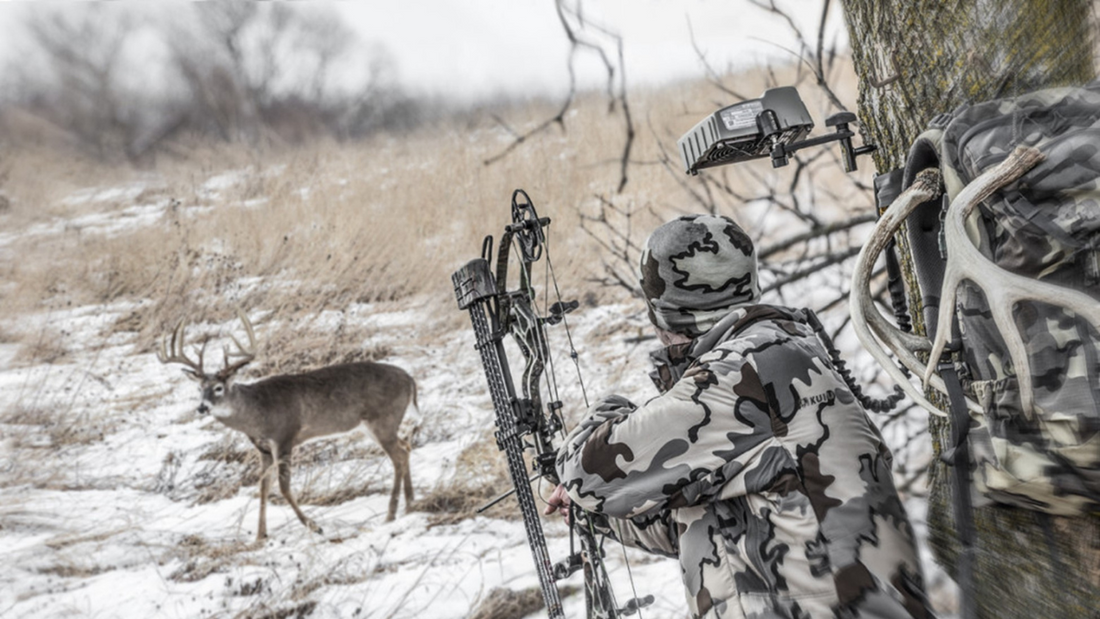Hunting the Wind | How Does Scent Actually Travel
If you were brought up deer hunting or have been doing it for even a short amount of time, you have likely heard the term “downwind”. With any experience at all, you will have learned that deer trust their nose before all else, making it extremely important to practice scent control. Most are taught that when hunting whitetails your only option is hunting the wind, trying to remain downwind of where you expect deer movement. However, if hunting in hilly country, or an area with any topography whatsoever, this becomes seemingly impossible. You may have had trouble understanding why, despite all of your detergents, sprays, and stand placement strategies, you are still getting busted.
It begs the question “is downwind enough”?
Simply put, hunting on what you deem the downwind side of an animal is not enough. There are far more factors at play than you may realize that affect how your scent is dispersed amongst your surroundings. One major contributing factor is thermals. This term is used to describe the rising and falling of air in relation to the earth’s temperature. Typically, as the sun rises in the morning, it heats the surface of the earth and, consequently, the air closest to it, causing an updraft, as long as the earth’s surface is warming. You may have noticed that you get busted less on morning hunts, that’s because the thermals are taking your scent straight up into the atmosphere. The opposite is true when the earth starts to cool. Colder air will start to settle into the lowest topography, creating a downdraft towards the earth. The result is a higher probability of getting busted during evening sits. The solution? Use this knowledge to your advantage. Hunt ridges in the mornings where the deer move below you, and leave the bottoms for evening hunts where the deer are traveling down with the wind to where your stand is located. Paying attention to these thermals will greatly improve your chances once you understand how they affect your deer hunting property.
Building further on the concept of thermals, wind direction seems to be more of an issue in the afternoon hours or anytime thermals are falling. This is due to your scent falling down toward the earth and unfortunately the deer. During the afternoon hours, it becomes more important to take into consideration scent control and the wind direction in relation to your setup and where you think the deer movement will occur. So, when hanging sets for an afternoon hunt, pay attention to the prevailing wind direction and position yourself to be on the downwind side.
Unfortunately there’s more to take note of when hunting the wind. Even if your set is correctly placed to accommodate for the prevailing wind and thermals, there is still one major factor at play when your deer hunting hill country. The final major contributor to consider when hunting the wind and taking steps for proper scent control is terrain.
There may have been times when you checked the wind several times before and while heading out to your tree stand, only to find that the wind is either swirling or coming from a different direction entirely at the stand. This is where experience comes into play, observing topographical maps and wind patterns while in the stand can solve this issue. Think of the wind as flowing water, rocks, and boulders in a stream simply replaced by cliffs and hills. Every large obstacle, hill, bluff, and group of trees will cause the wind to be diverted in some way or fashion. Think about the direction of the stream and how it will flow through your property. The air hits a ridge, is directed to a saddle, then into a valley, through the food plot, and flows out the creek bottom. Now place your stand into this stream and you’ll soon realize your previous mistakes.
If you play the wind, pay attention to thermals, and plan the topography you might improve your odds, but it is never a guarantee. Mother nature is tricky, and is always full of surprises. The only guarantee to get closer to more animals and bigger game, including the elusive ones that seem like the stuff of legend, is Ozonics. The patented scent elimination technology of Ozonics is scientifically proven to maximize your existing opportunities and create new ones you thought were unattainable by completely destroying your scent on a molecular level. Ozonics gives you a better way to hunt, and it's the only scent management tool you'll ever need.

